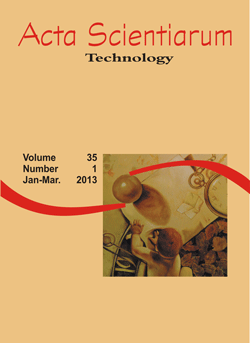<b>Evaluation of two different culture media for the development of biopesticides based on <i>Bacillus thuringiensis</i> and their application in larvae of <i>Aedes aegypti</i></b> - doi: 10.4025/actascitechnol.v35i1.13831
DOI:
https://doi.org/10.4025/actascitechnol.v35i1.13831Keywords:
biological control, fermentation process, agroindustrial wasteAbstract
The bacteria Bacillus thuringiensis var. israelensis (Bti) generates certain toxins with pesticide action, which can be used on the control of transmissible diseases by culicides, specially Aedes aegypti, the dengue vector. This biopesticide has been produced by submerged fermentation and, in Brazil, this production has been made by very little research centers and, more recently, by a unique small enterprise. For the implementation of a viable vectors control program through biopesticides, some studies about culture media are essential in order to join efficiency and low costs. In this way, agroindustrial wastes or by-products have been used as a nutrient source for the culture media production. In this study, corn steep liquor, a corn industrial processing by-product and tryptose, both with / without sugar addition, were compared as culture media. Cellular growth was evaluated by optical density at 620 nm, spore production by total viable cell count and LC50 by bioassays against 4th instar larvae. Among the four examined substrates, the medium composed by glucose plus corn steep liquor presented the best spore production and bioassay results.
Downloads
Downloads
Published
How to Cite
Issue
Section
License
DECLARATION OF ORIGINALITY AND COPYRIGHTS
I Declare that current article is original and has not been submitted for publication, in part or in whole, to any other national or international journal.
The copyrights belong exclusively to the authors. Published content is licensed under Creative Commons Attribution 4.0 (CC BY 4.0) guidelines, which allows sharing (copy and distribution of the material in any medium or format) and adaptation (remix, transform, and build upon the material) for any purpose, even commercially, under the terms of attribution.
Read this link for further information on how to use CC BY 4.0 properly.











8.png)




